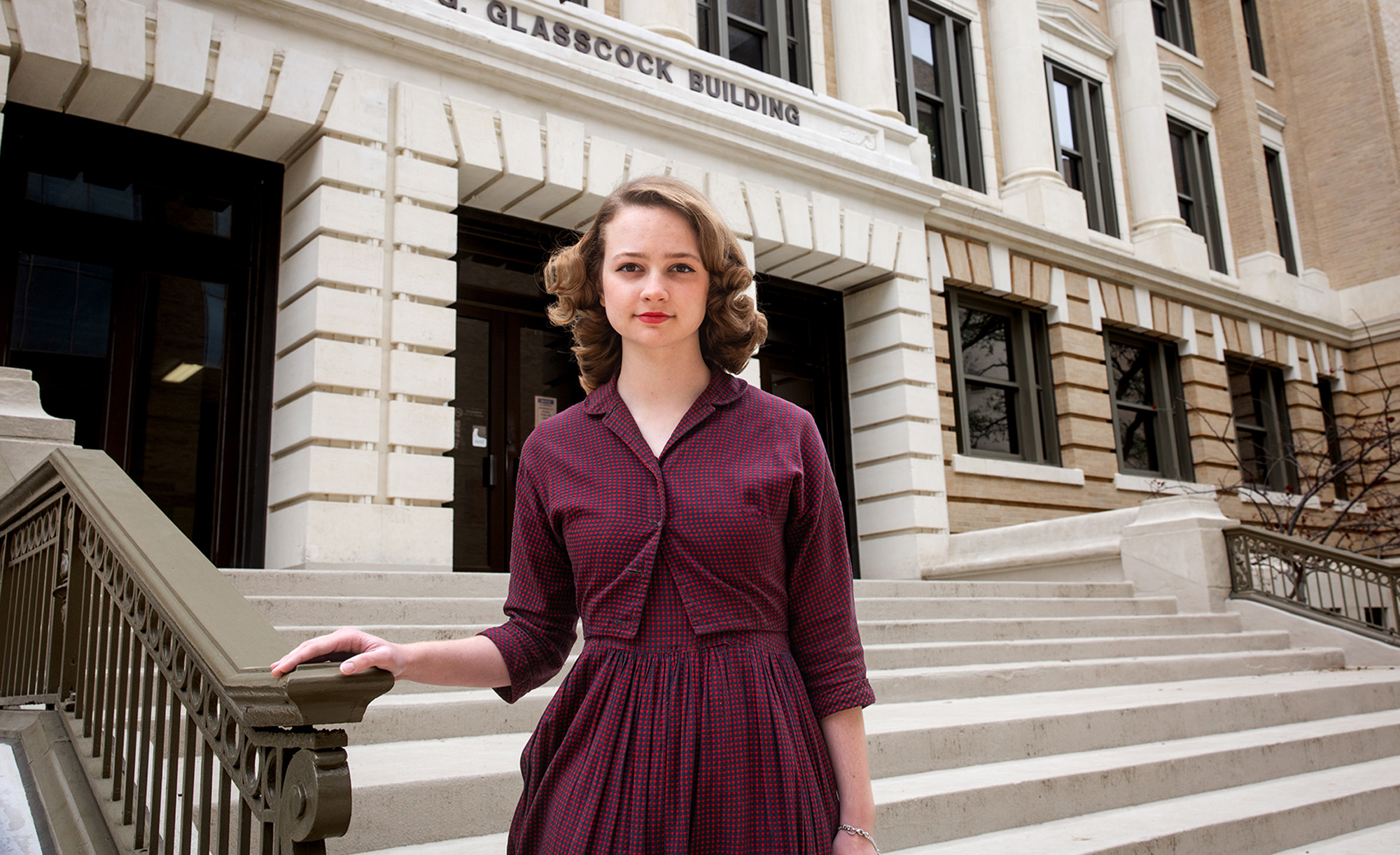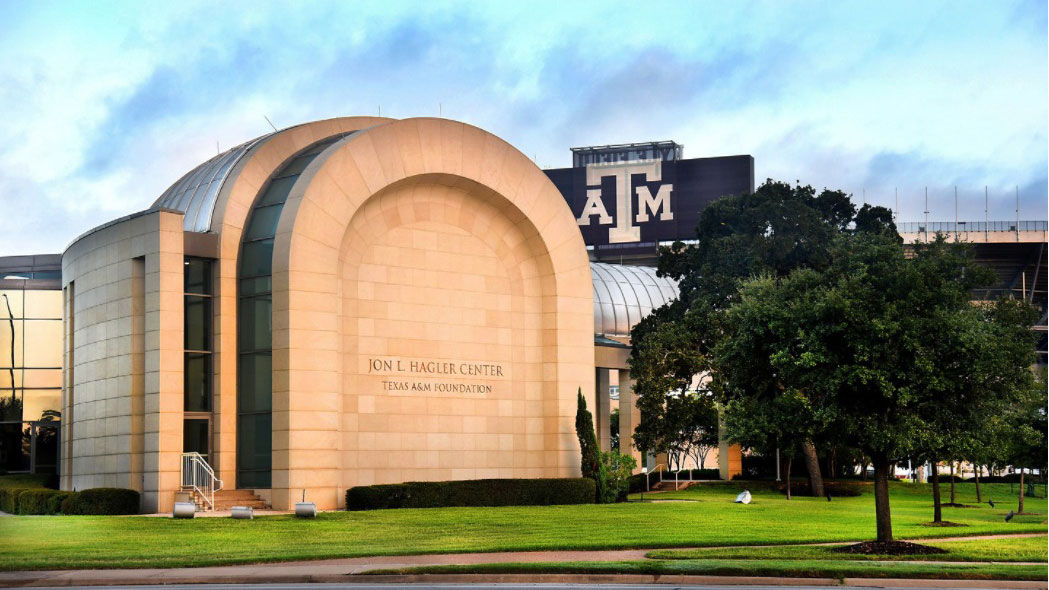
About 10 miles south of Texas A&M University lies the Museum of the American G.I., but it is never that far from the mind of history major and Glasscock Undergraduate Summer Scholar Alexis Brasher ’25. That’s where she lives her passion of preserving the past by working as a collection assistant, assessing, researching and digitizing incoming artifacts into a catalogue.
“I think it’s the best job in the world,” Brasher said. “One of the museum's main missions is to honor, preserve and educate on U.S. military history through the stories of men and women in uniform.”
As soon as she saw a job opening at the museum, Brasher jumped at the opportunity, even if it meant mopping floors or helping with the front desk. But the executive director of the museum, Dr. Leisha Mullins, learned about her interest in artifacts, and decided to hire Brasher in the collections department.
“I love working with uniforms as that kind of ties into my love for clothing and fashion,” Brasher said, “because fashion is representative in military uniforms. I'm at a point where I can look at a uniform and identify what era and war it's from.”
The habit of preserving clothing extends into her everyday life. Brasher fell into a distinct vintage sense of style seven years ago and hasn’t looked back. She keeps her clothing in good condition so it will outlive her and become part of someone else’s story.
“I don't know how many women have owned a dress before me — could have been one, could have been two, could have been three,” she said. “I don't know, but I'm glad to be a part of its story. That's what I try to do with understanding history — preserve something so future generations can enjoy it. The person who owned it before me did that for me without even knowing it.”
Brasher is grateful to connect with the past through clothing while she plans for the future.
“There is a part of history that I keep alive through women’s fashion or through men’s uniforms,” she said. “There is a legacy there that’s kept alive through history. The past isn’t always perfect but understanding and respecting it, and keeping memories alive, is important for future generations. It’s a way of understanding more about us and what’s in store for our future.”
Originally from South Carolina, Brasher — who wants to attend graduate school and then become an educator of history — chose to study at Texas A&M because she knew the Department of History is dedicated to giving undergraduate students the kind of high-impact research opportunities usually reserved for graduate students.
“I've only been here for a year and a half and I've already presented at conferences, I'm studying under a professor, working on an undergraduate thesis, and have a related job at the museum,” she said. “I wouldn't have had these opportunities without Texas A&M.”

Brasher’s thesis, “Historical Analysis Exploring the Role of African American Female Astronauts in the American Space Industry,” focuses on the lack of academic awareness of the six Black female astronauts who went to space between 1990 and 2024. She is working with her faculty mentor, professor and Cornerstone Faculty Fellow Dr. Albert Broussard, who specializes in African-American history. It will be published in Texas A&M’s OAKTrust Digital Repository.
“A deeper understand of 20th-century history can help clear up some of the confusion we face today,” she said. “Many of the challenges we see now — whether in technology, social unrest or politics—can be tied to the 20th century, making it so it’s a crucial period to study.”
Brasher shares these recommendations for future history students: “Ask questions. Talk to your professors. Be engaged. Don’t be afraid to pursue a niche field if it sparks your passion and helps others expand their knowledge.”
And for the world at large, Brasher has one last piece of advice: “Life is short. Dress the way you want!”

